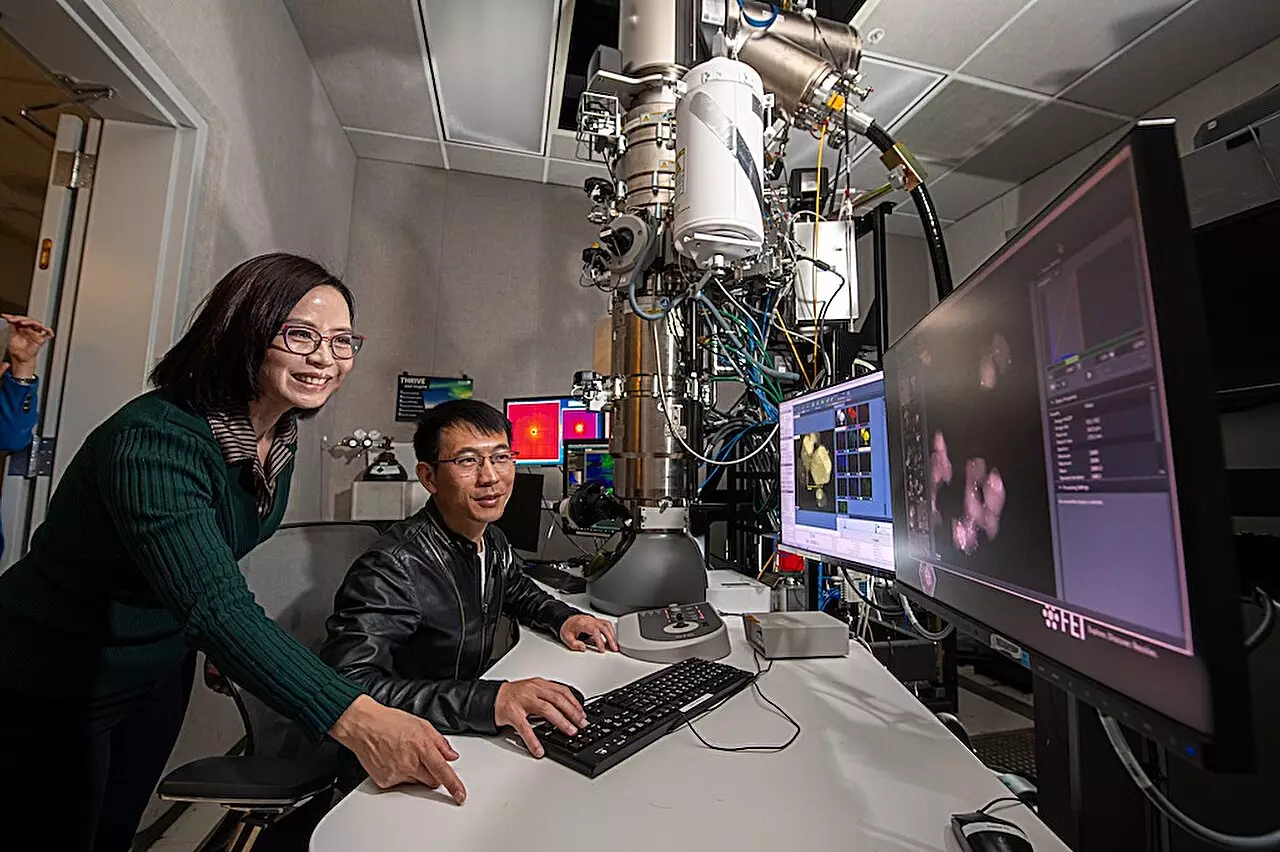In the ever-evolving realm of energy conversion and storage systems, understanding electrochemical reactions at a granular level has become paramount. The recent advancements spearheaded by researchers at Lawrence Berkeley National Laboratory (Berkeley Lab) offer a transformative lens through which we can observe these essential processes. By leveraging a novel polymer liquid cell (PLC) in conjunction with transmission electron microscopy (TEM), scientists can now visualize and dissect electrochemical reactions with atomic precision. This breakthrough not only enhances our comprehension of catalysts but also opens new avenues for innovation in energy technologies.
Electrochemical processes underpin varied applications, from the everyday operation of batteries to cutting-edge solar fuel generation. Despite their ubiquity, the detailed mechanics of these reactions remain elusive—to the detriment of advancing more efficient and sustainable technologies. The Berkeley Lab’s approach effectively bridges the gap in knowledge, allowing for a detailed, real-time appraisal of electrochemical reactions.
Introducing the Polymer Liquid Cell
The PLC developed by the Berkeley Lab team serves a dual purpose: it encapsulates the reactants in a controlled environment while permitting high-resolution imaging of the electrochemical interface. By halting reactions at precise points in time, researchers can dissect the evolution of materials and chemical compositions, yielding insights that were previously impossible to attain. This revolutionary technique has the potential to endow scientists with unprecedented levels of control over electrochemical processes.
Lead author Haimei Zheng articulates the significance of this advancement, highlighting how they can now track the transformations of catalyst surface atoms as they engage with liquid electrolytes during reactions. This capacity to elucidate the dynamic behaviors at the solid-liquid interface equips scientists with crucial knowledge necessary for enhancing catalyst performance.
Insights into Copper Catalysis
The initial experiments using the PLC focused on a copper-based catalyst known for its ability to convert carbon dioxide into valuable carbon-based products. The challenge has long been not only to improve the efficiency of these reactions but also to direct the output toward desired chemicals like methanol or ethanol instead of unintended byproducts. By employing the PLC, researchers have been able to classify what occurs at the pivotal solid-liquid interface during electrocatalysis.
The copper catalyst, presented in the form of a solid immersed in a potassium bicarbonate electrolyte, functioned as the substrate for investigation. Using advanced microscopy techniques, the team captured remarkable evidence of an “amorphous interphase”—a transitional state where copper atoms oscillated between solid and liquid amidst their interactions with carbon and the electrolyte. This previously unobserved phenomenon challenges established paradigms of catalyst design and performance, suggesting that understanding this interphase is crucial for optimizing reaction pathways.
Transformational Implications for Catalyst Design
The discovery of the amorphous interphase dramatically shifts the framework through which researchers approach catalyst design. No longer can scientists rely solely on the initial structural properties of catalysts; they must also consider the dynamic nature of solid-liquid interactions. Co-first author Qiubo Zhang emphasizes that this newly discovered understanding could inform the engineering of more durable and selective catalysts.
As the interplay of elements at the solid-liquid interface continues to evolve, it becomes clear that strategies for enhancing catalyst performance must adapt accordingly. This perspective is resonated by Zhigang Song, who points out that recognizing these dynamics may lead to novel approaches for prolonging catalyst longevity and stability, ultimately addressing one of the industry’s most pressing challenges.
Unleashing Potential: Beyond Copper Catalysts
The excitement surrounding this innovative microscopy technique extends beyond the realm of copper catalysts. Researchers at Berkeley Lab are eager to explore the applicability of the PLC across a spectrum of electrocatalytic materials, including those used in lithium and zinc batteries. The potential for unlocking new insights into various electrochemical systems offers a promising frontier for research.
Such advancements are not merely academic; they translate directly into real-world impacts. As the demand for more efficient and sustainable energy solutions grows, so does the responsibility of scientists to lead innovation in catalyst design. The Berkeley Lab’s breakthrough embodies this pivotal moment, emphasizing the intertwined nature of scientific discovery and technological progress in addressing global energy challenges.
The Berkeley Lab team has set the stage for a deeper understanding of electrochemical reactions at an atomic level, heralding a new era of possibilities in energy research that promises to reshape our approach to catalysis and beyond.

